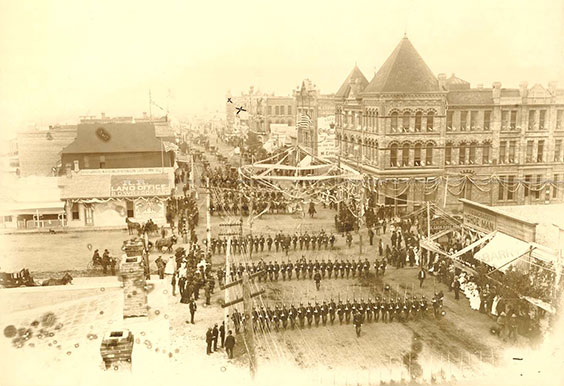Happy Independence Day! Did you know North Dakota’s history is specially linked to this holiday? On July 4, 1889, the men who assembled the original draft of our state’s constitution that established all our state’s laws met in Bismarck for the Constitutional Convention. There were 75 delegates who worked on the document, and it was handwritten in sections by several different clerks. Other members elected from outside the committee to work included a chaplain, a chief clerk, a sergeant at arms, and a watchman. The work was completed Aug. 17, 1889. Some—though not all—delegates signed it. The constitution was approved by voters Oct. 1, which is noted on North Dakota’s state seal. On Nov. 2, President Benjamin Harrison signed this state into being. The Fourth of July in 1889 must have been one of special excitement—it led to North Dakota being part of the United States!
So, to celebrate, and without further ado—here are four more interesting things about North Dakota’s Constitutional Convention.
- North Dakota wasn’t alone. Washington, Montana, and, of course, South Dakota all met simultaneously to set up a constitution prior to receiving statehood. All were reported on with interest, and the different conventions even wired greetings to each other.
Becoming a state was heavily politicized, especially in how it was perceived that each new state may add to the political arena. Legislation monitored this process. President Grover Cleveland had signed the Omnibus Bill allowing these four areas to become states and outlined the means for meeting in convention, but earlier drafts did not even fully establish if Dakota Territory would enter as one large state or be separated. It also originally included New Mexico on the docket.
The Disney movie “The One and Only, Genuine, Original Family Band” also displays this history as the backdrop to its plot, following an early pioneer family of divided political leanings which moves to “Dakota” around the time of these events. Along with some incredibly catchy tunes about both Grover Cleveland and Benjamin Harrison, it’s a trip to watch—and it was used as research for part of the state’s centennial celebration!
- There was a parade. Not too surprisingly, there were people gathering to work and people excited to see what was going on, and there was pomp and circumstance. Delegates joined a procession to the Capitol building down Main Street, nearly a mile in length, according to reports. This parade consisted of infantry and cavalry from Fort Yates and Fort Lincoln, two bands, a company of militia, the Grand Army of the Republic post, fire companies, and a group of “ladies on horseback” who represented the four new states being formed. Sitting Bull was also there and participated in the parade.

SHSND E0621-00001
- They took a few breaks. The delegates met over a calendar period of 45 days but didn’t work on the constitution more than about 32, and several times, a few days were taken off. A couple times, requests for a brief adjournment were requested, but not accepted. Once, a break was requested so farmers could be permitted to see to their farms. This request was first denied but was then contested.
- The delegates setting up the constitution kind of forgot the politics. In the original draft of the North Dakota State Constitution, delegates did not fully create the process of voting for the United States president. So the state called its first special session in 1892 to correct this, just prior to the first presidential election that North Dakota voters would be able to participate in. At that time, it was set up so that voters chose their three electors directly. Ironically, North Dakota evenly split its vote. Each of the three electors voted for a different candidate: one for the Populist, one for the Democratic, and one for the Republican. As far as I am aware, this was the only time that has ever happened in a presidential vote!
Interested in more history about this? Check out the constitution, view this photo of the members of the original Constitutional Convention, and see the reunion photo of the remaining members in 1914.

